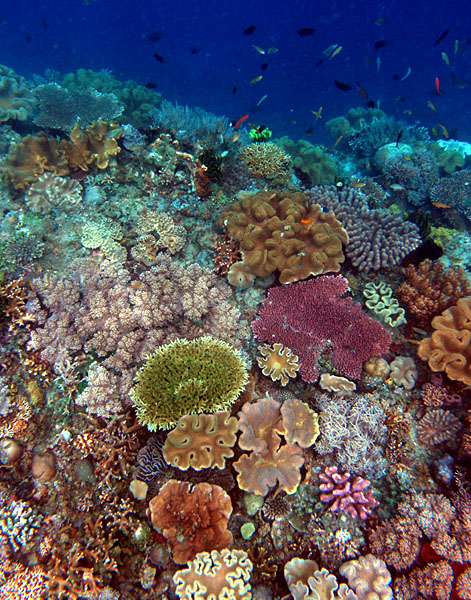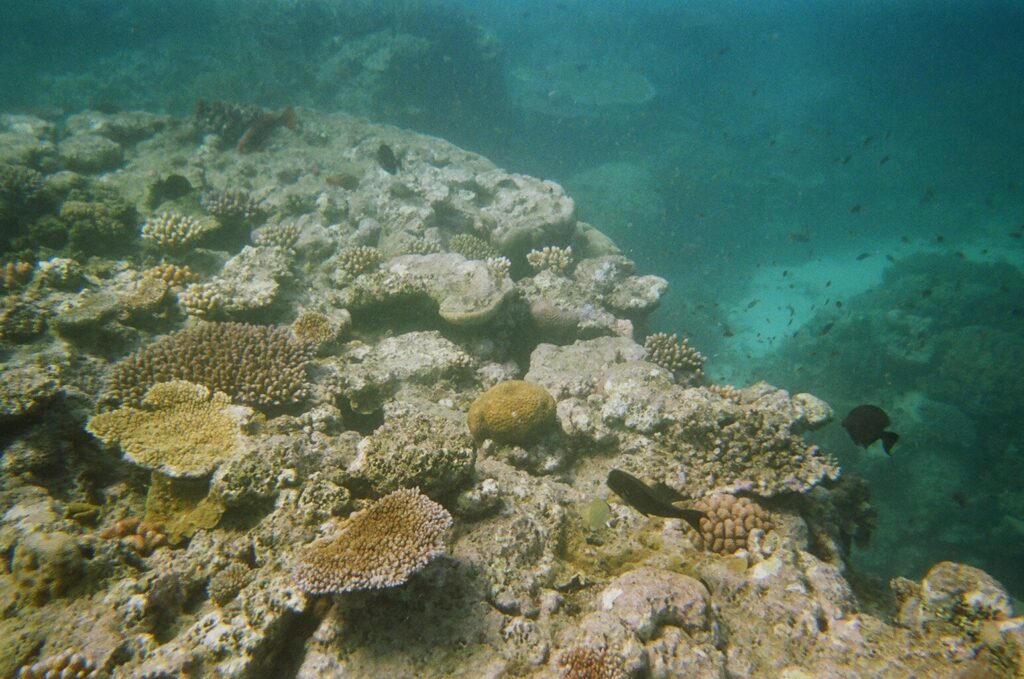Pezner, A.K., Courtney, T.A., Barkley, H.C., Chou, W., Chu, H., Clements, S.M., Cyronak, T., DeGrandpre, M.D., Kekuewa, S.A.H., Kline, D.I., Liang, Y., Martz, T.R., Mitarai, S., Page, H.N., Rintoul, M.S., Smith, J.E., Soong, K., Takeshita, Y., Tresguerres, M., Wei, Y., Yates, K.K., Andersson, A.J. 2023. Increasing hypoxia on global coral reefs under ocean warming. Nature Climate Change 13: 403-409
Coral reefs around the world are under threat from climate change. Ocean warming can cause coral bleaching, a process where corals expel beneficial algae living in their tissues, exposing their white skeleton. These algae provide energy to the coral through photosynthesis, so losing the symbiotic relationship can stress coral species. But ocean warming can have other effects, such as causing the amount of oxygen in the oceans to decline. This happens because as warming occurs oxygen solubility decreases, meaning that water molecules expand, and there is less room for oxygen molecules to be dissolved in the ocean. Warmer temperatures can also cause organisms to breathe more and consume more oxygen. As warming continues, low dissolved oxygen, also called hypoxia, will become more common in the oceans. Hypoxia can have extremely negative effects on marine animals, including reducing growth rates, feeding, or even causing death.

A group of researchers from across the world wanted to determine a baseline in the oceans for how much hypoxia coral reefs are currently experiencing, and determine how that might increase with future predictions of ocean warming. The scientists used data from sensors to detect dissolved oxygen levels placed at over 32 tropical coral reef sites around the world to synthesize current dissolved oxygen availability in these areas. After they collected this data, they used computer models to predict how the oxygen solubility at each coral reef would change using different ocean warming scenarios, and therefore how much hypoxia the reefs can expect to experience in the future.
The researchers noticed that the dissolved oxygen was lowest in the early morning, and highest during the mid-late afternoon at all the coral reefs. This makes sense, because oxygen is produced by organisms photosynthesizing, and photosynthesis needs light to occur. Nearly all of the sites (84%) experienced hypoxic events, with some events lasting less than 12 hours and some for more than a day. The events also ranged from mild to severe in terms of how low the dissolved oxygen concentrations in the water were.

This data then was used to make a computer model predicting how much hypoxia the coral reefs would experience under three different scenarios: 1. Ocean warming similar to what is seen today, 2. Ocean warming under an extreme climate change scenario (over 3°C, or 5.4°F, of warming), and 3. An extreme marine heat wave of 6°C (or 10.8°F). They found that under the second and third scenario the number of coral reefs experiencing hypoxia would increase to over 94%, the duration of hypoxia events would increase (how long they last), and so would the severity (very low dissolved oxygen concentrations in the water).
However, under the first scenario, where climate change and ocean warming are limited, there was little increase in hypoxia at the reef sites compared to what is currently seen today. This is good news – and means that we should work hard to limit the burning of fossil fuels. Keeping warming to a minimum can help keep hypoxia low in the ocean, which would benefit coral reefs and all marine animals.
I’m a PhD student in Oceanography at the University of Connecticut, Avery Point. My current research interests involve microplastics and their effects on marine suspension feeding bivalves, and biological solutions to the issue of microplastics. Prior to grad school I received my B.S in Biology from Gettysburg College, and worked for the U.S Geological Survey before spending two years at a remote salmon hatchery in Alaska. Most of my free time is spent at the gym, fostering cats for a local rescue, and trying to find the best cold brew in southeastern CT.

